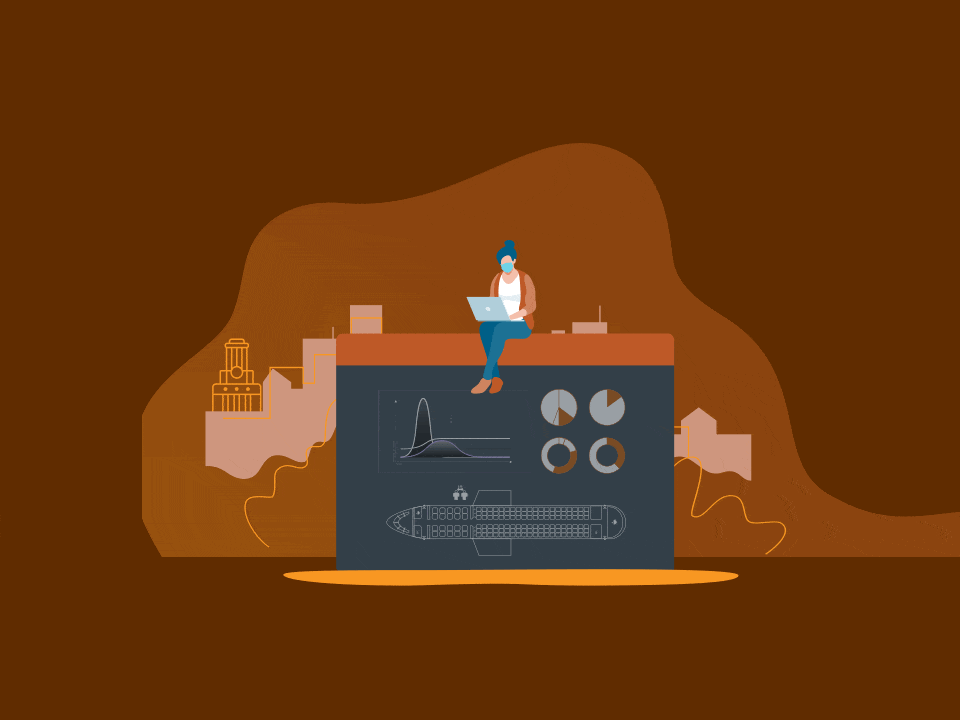
SARS-CoV-2, and the COVID-19 disease it causes, only emerged late last year, and its rapid spread around the world has experts racing to find ways to forecast its impact. Several researchers in the Cockrell School of Engineering are putting together models looking at crucial decisions and information surrounding the virus.
Forecasts and models are key sources of information for decision makers. Predictions of coronavirus’ toll, both on human life and supply chains around the globe, helped shape decisions around social distancing and shelter-at-home rules.
So many unanswered questions remain, several months into the pandemic. The models, from faculty in the Cockrell School’s Walker Department of Mechanical Engineering, seek to answer key questions about transportation and medical logistics and supplies and evaluate how well forecasts predicted the impact of the virus.
Social Distancing on Planes, Trains and Automobiles
Associate professor Vaibhav Bahadur is working on a model that uses fluid dynamics and machine learning to analyze infection risks in different modes of transportation. Bahadur’s model will examine passenger capacity, seating arrangements and the influence of mitigation measures taken, such as wearing masks, on planes, subways, trains and other types of transportation. The model will also look at air conditioning and airflow settings in personal and ride-share vehicles.
Bahadur says understanding infection risks under various conditions can guide regulators and transportation stakeholders in making decisions about how airlines, ride-share companies and transit agencies should operate going forward, as global economies reopen.
“We all choose where to sit in an airplane, when we ride a bus/train or when we get into an Uber/Lyft,” Bahadur said. “I want to offer folks basic guidelines on how to make these choices from a health perspective.”
Did Forecasters Get it Right?
J. Eric Bickel, an associate professor focused on the science of decision making, is making a model to score how accurate the various forecasts about the virus turned out to be. Predictions of death tolls have varied throughout the crisis, from tens of thousands to hundreds of thousands to millions.
Bickel aims to identify lessons learned from the underlying models that powered the forecasts. He will examine whether complex models, which tend to be taken more seriously because they appear sophisticated, beat out simplified statistical models.
“I think it will be interesting to see which models performed well — what types they are — those that didn't do well, and what’s behind them,” Bickel said.
Where Should Key Resources Go?
Limited resources, from protective equipment for medical personnel to testing supplies, has been a challenge as local, state and federal officials respond to the impact of coronavirus. Erhan Kutanoglu, an associate professor in the Cockrell School’s Operations Research and Industrial Engineering Graduate Program is pivoting his model for making logistical decisions for hurricanes to the COVID-19 pandemic.
The hurricane model focuses on the creation of staging areas and using existing hospitals out of the way of a storm and the logistics of getting patients from hospitals and nursing homes to safe sites. Coronavirus is a moving target with infection curves constantly changing over time -- rising, peaking and falling, simultaneously, in different cities and states. That makes it even harder to allocate resources. Kutanoglu’s model will consider the changing nature of the infection curves over time and region into account and match the resources, hospital beds, ventilators, personnel, etc. with demand created by the infection curves. His model will produce recommendations about when and where to put temporary medical facilities, proper staffing, capacity and necessary medical supplies.
“Hopefully, with the knowledge we have gathered in solving such patterns for hurricane preparation, we can quickly do the same for pandemic preparation,” Kutanoglu said.







